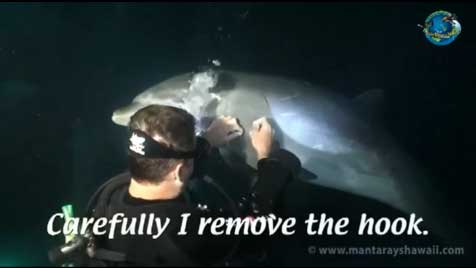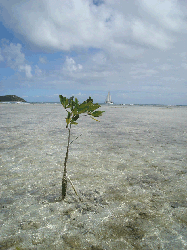Anchoring Restrictions Proposed from Maryland to Florida

Boats anchored along the Indian River in Melbourne, FL. Photo by N.Birnbaum
Jack Dozier, Publisher of the Waterway Guide and the well-loved Skipper Bob Guides has sent the following update on Anchoring Restrictions likely to be put in place soon all up and down the Eastern Seaboard. Cruisers and local boaters alike, should get involved in if their communities are subject to these restrictions or they can support organizations that speak for us like the SSCA or Salty Southeast Cruiser Net and make your voice heard.
Whether you’re a recreational boater, cruiser or yachting down the ICW for the season, these issues will affect your plans. Stay in touch and stay on top of these important issues.
Here’s the update:
“With the summer cruising season in full swing, cities from Maryland to Florida are considering or are in the process of implementing restrictions on anchoring, both for transient and local boats. In many cases, these restrictions are in response to problems directly caused by derelict boats in the harbors. However, most will affect cruisers as well as locals.
Here’s a rundown of the various proposals under consideration and in the implementation process, plus links you can click for additional information:

Boats in Annapolis. Photo by N.Birnbaum
• Annapolis, MD — Annapolis officials, faced with a petition from Mears Marina asking that they restrict anchoring in the area adjacent to the marina on Back Creek, will hold a hearing June 28 to gather public input on the proposal. The proposed restrictions would affect only a small portion of Back Creek. However, Annapolis Harbormaster J.P. “Flip” Walters tells Waterway Guide that if a no-anchoring zone is approved off Mears Marina, other marina owners on Back Creek are likely to ask for similar restrictions near their own facilities. Read More
• Carolina Beach, NC — Carolina Beach (Atlantic ICW Mile 295) is moving ahead with plans to install a field of 10 moorings in Myrtle Grove Sound directly off of town in an area that has fallen out of favor for anchoring due to poor holding. Town officials say they hope the moorings, plus a new dinghy landing, will encourage cruisers and other boaters to visit Carolina Beach and will help to revitalize the town’s waterfront. The moorings should be in place by this fall. Read More
• St. Augustine, FL —St. Augustine will continue to gather public feedback on its proposed anchoring restrictions at a workshop scheduled for June 30. St. Augustine city officials continue to mull over potential anchoring restrictions outside of the mooring fields installed earlier this year around the Bridge of Lions (Atlantic ICW Mile 778) and in Salt Run. The city is one of five municipalities participating in the pilot Florida program run by the Florida Fish and Wildlife Commission (FWC) that allows municipalities to place moorings and regulate anchoring on a trial basis. St. Augustine’s proposed 10-day limit on anchoring generated some controversy at a public workshop in late May, with cruiser representatives arguing that anchoring should be allowed for much longer than 10 days at a stretch. Read More
• Stuart/Jensen Beach/Martin County, FL — The city of Stuart, in partnership with Martin County, has just been accepted into the pilot Florida FWC program. Stuart and Martin County have not yet formulated plans for their participation in the pilot; the first step should be public workshops, to be held this summer. Meanwhile, Martin County has proposed a $1 million mooring field with 51 moorings that would be located in a popular anchorage located in the Indian River Lagoon south of the Jensen Beach Causeway and east of Indian River Drive at Intracoastal Mile 982. The mooring field, which is not included in the FWC pilot, would include a dinghy dock, shower and laundry facilities on shore.

Vessels anchored along Miami Beach, off Belle Isle. Photo by N.Birnbaum
• Florida Keys — Monroe County, which encompasses all of the Florida Keys, also will participate in the pilot Florida FWC mooring program, and is exploring potential anchoring restrictions at three sites that already have mooring fields: Key Largo, Marathon and Key West. The county held workshops in all three sites in June, and is continuing to gather public comment on various possible proposals. As with the other four sites in the FWC pilot program, any restrictions on anchoring in the vicinity of mooring fields will need to be approved by the FWC.
• Sarasota, FL — Sarasota, another of the five Florida municipalities selected to participate in the FWC pilot program, is moving ahead with a long-delayed plan to install moorings in the city’s main anchorage. At the same time, Sarasota will begin the process of developing an ordinance that potentially could place some restrictions on anchoring in the vicinity of the mooring field. The city has struggled for years with the problem of derelict boats in the main Sarasota Bay anchorage, located downtown directly off city-owned Marina Jack marina. Read More
• St. Petersburg, FL — St. Petersburg, the fifth Florida municipality participating in the FWC pilot, is poised to install moorings in its North Basin by this fall, and plans to ban anchoring there beginning sometime this summer. Once the city eliminates anchoring in the North Basin — also known as the Vinoy Basin due to its proximity to the Vinoy Hotel — cruisers who want to visit downtown St. Petersburg by boat will have little choice but to pick up a mooring or rent a slip, since there’s no other safe anchorage nearby. Read More
The numerous recent notices concerning restrictions on anchorages are at once alarming while at the same time offer a solution. The issue looking for a solution is that some anchorages may, over time, become a home for derelict boats and misfits if there are no controls.
Anyone who cruised through the Keys in years past may remember the uncomfortable situation that existed at the Boot Key Harbour anchorage prior to its cleanup and the placement of moorings by the city of Marathon. Now, instead of dozens of rag-tag and often abandoned boats and the issues that came with them, there is a well-organized mooring field full of boats that any of us would be happy to live alongside. The inhabitants of the mooring field now contribute to the Marathon community rather than put a strain on it. For a modest mooring fee, the city provides a secure mooring, pump-out service, dinghy dockage, shoreside facilities with laundry, bike rakes, trash collection and other services.
The anchorages being considered for mooring fields are generally located in areas popular with transient cruisers, which happen to also be population centers. It should come as no surprise that areas of dense population have more restrictive policies regarding … well, just about everything. We generally accept this as the price of convenience and accessibility.
If anchoring restrictions were to spread to remote and unpopulated areas we would have serious concerns, and unfortunately, once started, those in control of restrictive government policies often have a hard time knowing where to stop. However, as long as restrictions on anchoring are limited to populated areas with a high concentration of boaters, we believe a mooring field with its amenities can offer advantages over an anchorage. Our responsibility as cruisers is to be involved in the regulation setting process to keep it from getting out of hand.”
Jack Dozier
Publisher
Waterway Guide/ Skipper Bob
Thanks to Jack Dozier and the Waterway Guide’s Boating Resources for keeping us all informed.































